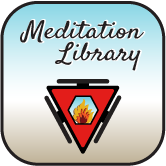Layer Four, Week One – Sunday
- Morning – Watch Videos and Read Instructions Folding Compensation and Hanging in Neutral
- Morning or Evening – Read Layer Four, Week One Concepts
- Evening – Practice Hanging in Neutral
Sunday’s Focus
Compensations are how you try to balance your energy by isometrically putting energy in a opposite, conflicting, contrary, or opposing direction. Compensations mitigate or qualify. Do the movements at the bottom of the page for physical examples. A communication example would be Jeff, thank you so much for my logo!!! I think it looks awesome compared to some of the others! Her compliment could have stopped after awesome, the rest was added to mitigate or qualify (lessen the impact, lower the energy). She gave energy and then took some of it back. That give and take happened on both ends. She felt and I felt it. The qualifier watered down the compliment.
Sunday’s Concepts
The sooner you feel yourself veering off track, the less energy it will take to get back on track. The less energy you spend staying balanced the more that will be available for everything else. As you stay balanced and gain momentum everything will get easier including success, happiness, fulfillment, and playfulness. You will have much less stress, won’t feel overwhelmed, and you will not get or feel stuck.
Last week, we explored the expansion – discomfort – trigger – distraction – imbalance – reaction – compensation – fatigue – stress – overwhelm – dysfunction progression.
Your trajectory and intention will be to remain in a balanced expansion, walking the edge, long enough for your system to adapt to new, higher energy, productivity, and happiness levels. Over the next few weeks, you will learn what it takes to rebalance and stay balanced.
The first key to staying in balanced expansion is to learn the inner workings of the balancing parts.
You read about compensation early last week. Let’s revisit it and go a little deeper.
Compensation is why balance can feel so extremely fatiguing. Do the Leg Swing and Folding Compensation movements at the bottom of the page and you will feel just how much more you need to compensate when you swing your leg aggressively and how much more energy you exert when you swing or bend forward.
Watch this video and focus on the idea that the front leg is absorbing (stopping) the momentum created by the back leg. That is compensation. It is inefficient, leads to injury, and lowers your growth potential.
Layer Four, Week One – Monday
- Morning – Practice Folding Compensation
- Morning or Evening – Monday Concepts
- Evening – Practice Hanging in Neutral
Monday’s Focus
Take any one of your compensations and see if you can identify some of the ingredients. Start with the mental. Why, what was the primary reason, you compensated? What other reasons might there be? Don’t think too deeply, say what comes to mind. Most of the reasons you compensate aren’t factual; they are fear based, so don’t overthink, just identify.
Monday’s Concepts
This week’s movements give you the feeling of physical compensation; let’s look at the non-physical and let’s start with emotional compensations. The biggest emotional compensation is fear.
Fear is the compensation vehicle your subconscious mind uses to compel you to limit, distance, or quit. Fear uses compensation to hide you from your actual potential. It tries to keep you firmly rooted in your familiar or habitual potential.
You are going along and having a productive day, say tending your garden. You are mulching, cultivating, and planting. It is incredibly rewarding. Your hands are in the dirt, you smell the earth, compost, and fertilizer. You are grateful and fulfilled. You smile, hum a tune, and feel just how relaxed you feel. You acknowledge how rewarding gardening is. (At this point, you are expanded, vital, and rejuvenated).
Then, your subconscious mind starts worrying about how much more expansion, vitality, and rejuvenation you can tolerate and it starts looking for ways to wilt and wither your growth. So, it brings up the memory of when you have had failures or partial failures and projects that onto the present moment. Before you realize it, you are worrying about the seeds not germinating, persistent pests and pestilence, lack of sun, too much water, or if your thumb isn’t green enough. You compensate out of your happy place because your subconscious mind has deemed you too happy.
Layer Four, Week One – Tuesday
- Morning – Practice Folding Compensation
- Morning or Evening – Tuesday Concepts
- Evening – Practice Hanging in Neutral
Tuesday’s Focus
Emotional compensations are a little harder to identify. They will usually involve qualifiers or some sort of mitigation. The energy of emotional compensations will moderate, diminish, or blunt the impact of what you are feeling or the feeling behind what you are saying. See if you can find some of yours. I will guarantee you that you emotionally compensate dozens of times a day. Start looking, without judgment, and you will find them.
Tuesday’s Concepts
Distancing is probably your second most used emotional compensation. When you create, maintain, instigate, or allow distance from your relationship to others, yourself, or your environment you reduce your chances of success, fulfillment, and happiness.
When you distance, you are limiting the degree to which you are willing to be present. You become a partial version of yourself. Here are some examples:
You meet someone and you are hesitant, standoffish, or overly brash. The other person doesn’t see who you truly are, and what you are actually capable of. They make assumptions about your capabilities based on your limited presence. They pigeonhole you into someone that isn’t extraordinary. You don’t come to mind when they are looking for someone to socialize or collaborate with, recommend, or hire.
You probably know or work with people who don’t stand out, who seem to blend into the background like wallpaper. Or maybe you know people, yourself included, who shrink in certain scenarios. I rarely stand out in large social situations where I don’t know very many people. I don’t (or choose not to) engage. I maintain a distance by actively moderating my energy.
In the infrequent instances when I don’t distance, I expand to fill the available space, meet new people, have stimulating conversations, and give myself an opportunity to share what I do and what fascinates and motivates me.
In what situations do you limit yourself by distancing? What does that feel like? Does it feel enlivened or limiting? What would it take to try expanding yourself in those situations?
Layer Four, Week One – Wednesday
- Morning – Practice Folding Compensation
- Morning or Evening – Wednesday Concepts
- Evening – Practice Hanging in Neutral
Wednesday’s Focus
Environmental compensations will be the distractions you attach to and the distance you maintain from your environment and the people in it. Your distractions pull you away from your focus and intentions by pulling some of your energy in an opposing direction.
Wednesday’s Concepts
The most egregious distancing you probably do is with your partner, friends, or family. You compensate for your discomfort by pushing or pulling away. Intimacy, transparency, and connection are incredibly powerful and expanding. You get big, powerful, and energized to the degree you allow yourself to intimate. When that happens, your subconscious mind goes along for a while until you get too big for its comfort and then it starts to implement your habitual patterns of distancing. Maybe you space out, get distracted, or say something that will trigger your partner to also distance. Do you know what your habitual distancing moves are? Are you aware of them in the moment or afterward? Do you blame your lack of intimacy on others?
You are trying to minimize your fear, emotionally compensate, by creating distance anytime you are sarcastic, critical, demanding, demeaning, dismissing, or passive aggressive with your partner, family, friends, coworkers, or people you come in contact with.
Spend some time considering your motivations when you chose to distance from others. You will find that you are fearful of something, usually too much intimacy, truthfulness, or connection. You get afraid of being yourself (to a degree that is outside of what is typical) and you shrink … or you jostle, nudge, or pressure others into moving away.
Shrinking and pushing people away requires a lot of energy. After you push, you have less emotional energy reserves. You are less. If some or all of your personal interactions are exhausting … now you know why. If relationship feels hard, it is because you are making it hard by establishing, monitoring, and maintaining a preset distance, emotionally compensating for your fear of your own grandeur.
Layer Four, Week One – Thursday
- Morning – Practice Folding Compensation
- Morning or Evening – Thursday Concepts
- Evening – Practice Hanging in Neutral
Thursday’s Focus
Environmental compensations will be how you maintain a comfortable distance from your environment and the people in it. See if you can identify what your comfortable personal space is and how that changes with different people and situations.
Thursday’s Concepts
All emotional compensations will also have multiple mental compensations. When you are emotionally distancing yourself you think about the past, present, and future possibilities, ramifications, and justifications of the story, drama, or fear. The thinking adds to your distancing. You are less present to the degree you are mentally distracted.
Every emotional drama has a story attached with plenty of twists and turns. They are all fiction and they all burn tons of energy. They also all take you out of the moment into some fantasy land your subconscious mind creates.
Think about the last time you were emotional. How many stories did you create? How many past events did you resurrect? How did you justify your emotions? How much energy did you spend thinking about the variables and permutations of your stress, blame, resignation, jealousy, frustration, impatience, anger, sadness, or grief?
Watch for this type of distancing in others and rest assured that you are just as guilty. When you feel yourself mustering a blustering, take a few deep breaths, ask yourself “what is here right now?” and then act in the way that is most beneficial and kind to everyone involved.
Layer Four, Week One – Friday
- Morning – Practice Folding Compensation
- Morning or Evening – Friday Concepts
- Evening – Practice Hanging in Neutral
Friday’s Focus
Track your physical and emotional distance and how it changes based upon people and settings. Your distancing will have a recognizable feeling. It will change with every person and be as distinctive as his or her voice, smell, and appearance.
Friday’s Concepts
Let’s talk about your subtle body: your life force, energy, prana, chi, juju, or mojo. Every compensation (mental, emotional, and physical) not only drains your energy but it unbalances it. When you think, your energy goes to your head. When you get emotional, the energy goes to the body area associated with that emotion. As you add value and complexity to your emotions and thoughts, they increasingly unbalance you.
Here are some examples of how imbalanced thoughts and emotions can pull you off center and out of your sweet spot:
- A dysfunctional relationship will cause energy to pool in your upper chest as your heart ache persists.
- If you have low self-confidence issues, your energy will tend to compress energy in your low belly as you limit your self expression.
- When you don’t feel safe or empowered enough to speak, energy collects in your throat.
- Fear of progress, change, and intimacy cause energy to condense and wedge into your low back and sacrum (you hold back and your back holds tension).
- When you compensate by getting fuzzy, distracted, cloudy, unclear, or frenetic, your energy moves away from your center and out of your body.
When your energy is diffused, compressed, unbalanced, or frenetic it doesn’t flow. It gets stuck and that stuckness lowers your ability to act, respond, and create. So, the key is to not diffuse and compress, to stay balanced and not allow your energy to get frenetic. Start to feel when you are diffusing or compressing your energy and ask yourself what alternatives exist. Choose one that feels manageable and begin the process of change, growth, and adaptation.
Layer Four, Week One – Saturday
- Morning – Practice Folding Compensation
- Morning or Evening – Saturday Concepts
- Evening – Practice Hanging in Neutral
Saturday’s Focus
Begin to be aware of how you limit your interactions, intimacy, and connections. How do you only partially express your essence, mojo, magnificence, kindness, happiness, affection, empathy, and godliness? After you increase your awareness of how you limit yourself, ask yourself why, ask yourself what you are afraid of, and then try something outside of your current normal.
Saturday’s Concepts
Hopefully, you read and tried all of this week’s suggestions in the Focus section. If you did, you will be much more familiar with how you compensate, when you compensate, and how much energy you are wasting with your compensations.
Here is the second part of the compensation cost. After you compensate you must spend energy to get you back to where you were before you compensated, effectively doubling the energy expenditure.
If you are headed to Grandma’s house for some of her famous warm apple pie and you take a wrong turn and drive 30 miles in the opposite direction before you realize it; it isn’t a 30-mile mistake, it is a 60-mile mistake because you must get back to the place where you made the wrong turn. You’ll eventually get to Grandma’s, but what’s waiting for you will be cold and will probably have a soggy bottom (the pie not grandma).
Compensations are what your do when you allow yourself to be distracted. They take you out of balance, cost you energy, and limit your potential.
As you can find your compensations, identify your distractions, and then stop doing them, you will find yourself with a lot more energy, much less stress, and everything in your life will feel easier. You will get warm pie and a dry bottom.
Next week, we will explore the components of balance and how your bodies communicate, negotiate, and compromise.
Folding Compensation
Step 1 – Stand with your feet together and your hips and butt against a wall.
Step 2 – Take a minute to feel what sensations are present. What does it feel like to stand against a wall?
Step 3 – Begin to slowly bend forward from the waist. Keep your heels and butt against the wall.
Step 4 – Feel how your center of gravity (balance point) changes and what your body does to compensate.
Step 5 – Do this a few times and see if you can identify your physical compensations. Which body parts move to help you maintain your position?
Step 6 – Move your feet a foot’s length away from the wall and bend forward a few more times.
Step 7 – Observe how your compensation changes. Watch how your hips shift backward as compensation for your torso’s weight shifting forward.
Step 8 – Move your foot a half a foot’s length away from the wall. Feel how quickly you shift and your hips if you don’t push into your toes. Track your compensations and be curios what you might have to do to not compensate.
Step 9 – Move your feet an inch or two away from the wall and bend forward a little and remain motionless. Track your physical compensations and where you begin to fatigue. Where do you feel tension? Can you feel how the tension becomes a distraction?
Step 10 – Repeat step 9 tracking your mental compensations. What thoughts, stories, and internal conversations happen?
Step 11 – Repeat and be aware of your emotional compensations. What fears arise? What feelings or emotions come into your awareness?
Step 12 – Repeat and feel the energy of the environment. Can you allow the energy field of the objects around you to help reduce the energy you are expending maintaining your balance?
Why it Matters – Here is the key: no matter how little you bend forward, you will always compensate. Compensations will always burn energy. The more balanced you are; the closer you will be to fluidity and effortlessness. Fluid movement is hyper-efficient. How effortless does this look? His movements have no hint of constriction, compression, or tension. Nothing appears to be holding him back.
Everyday Usability – Give some thought to situations or areas in your life that feel or have felt effortless. What did they have in common? Imagine what it would be like if your whole life and every aspect of it got significantly easier, more fluid, and infinitely more rewarding. Compare the feelings of being unbalanced and being balanced. Now find some part of your life that is unbalanced, feel into the qualities of the imbalance, and then explore what that quality might feel like if it was balanced.
Progression – Take this idea and translate it into the typical physical things you do every day. Where and how does your body adjust to help you maintain balance? Translate this idea to your typical thought patterns and emotional fluctuations. Where do you mitigate, qualify, or moderate what you are thinking or feeling?
Hanging in Neutral
Step 1 – Sit comfortably. Adjust, scratch twitch, and wiggle until you can settle completely and then do a Current60 to assess your body, part by part.
Step 2 – Gently close your eyes and connect to your entire body as one unit.
Step 3 – Inhale and release your breath back to neutral (no forced exhale, just release the inhale).
Step 4 – Relax (Hang) in neutral; relax as many aspects of your body and being as possible.
Step 5 – Hang in neutral for as long as is comfortable then inhale fully and then relax to neutral again.
Step 6 – Repeat a few times until you get comfortable with this movement.
Step 7 – Once comfortable, begin to assess your balance and imbalance in each of your bodies.
Step 8 – As you hang in neutral, assess the balances and imbalances in your mental body. Do this for a few breaths or until you are fairly certain your assessment is accurate.
* Reminder – You are assessing when you are hanging in neutral, not during the entire breath.
Step 9 – Take a few more breaths and assess your emotional body as you hang in neutral.
Step 10 – Continue to breathe as you hang in neutral and assess your physical body. Feel for symmetry or lack of symmetry in each area from side to side, front to back and top to bottom (pun intended).
Step 11 – Assess your subtle body as you hang in neutral and feel for any areas, appendages, or organs that feel like they are undercharged or overcharged.
Step 12 – Check in and assess how you are connected to and balanced within your environment. Do you feel like you are a part of your world or apart from it? Check your connection with each of your bodies.
Step 13 – Continue the Hanging in Neutral breaths and with your eyes closed bring your focus to the inside of your eyelids. Breathe deeply, relax to neutral, and then become aware of what you can see with your eyes closed. It will change, watch for it!
Why it Matters – The neutral part of the breath is the only place where you can completely relax. As such, it is the only place where you are balanced in the breath cycle. As you get more familiar with what neutral feels like in your breathing sequence, it will be easier to detect neutral in all of the other areas of your body, relationships, and life.
Everyday Usability – Whenever you start to feel like you are getting unbalanced, hang in neutral and assess. See if you can allow yourself to rebalance. Getting stressed in traffic? Work deadlines piling up? Kids pushing all of your buttons? Aches and pains driving you to distraction? All of those and any like it are great opportunities to Hang in Neutral and let your systems rebalance.
Progression – Try Hanging in Neutral while you walk and assess your symmetry and balance. Try it while you listen in conversation. Try hanging for longer in the neutral space and increasing your ability to relax and the depth of your relaxation. Try Step 13 with normal breathing for an extended period of time.

















